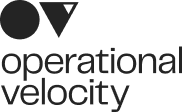An MDR Remediation Project
Operational Velocity provided leadership, attention to detail, and technical knowledge during the MDR transition activities and were absolutely critical to a successful implementation of the EU MDR requirements.”
The European Union (EU) has implemented new regulations that significantly impact the medical device industry. These regulations, known as the EU Medical Device Regulation (MDR), have been enforced since May 2021. However, the EU Parliament has voted to extend the Medical Device Regulation (MDR 2017/745) transition period. The extension will see the May 26, 2024, deadline postponed until 2027 for higher-risk Class III and implantable IIb devices, and May 2028 for lower-risk Class I, IIa and other IIb devices.
Compliance with the MDR is mandatory for manufacturers who wish to market their medical devices in the EU. It involves rigorous processes including enhanced clinical data collection, risk assessment, quality management, post-market surveillance, and the implementation of a Unique Device Identification (UDI) system for better traceability. The regulation aims to provide greater transparency, increased product safety, and a stronger emphasis on clinical evidence to protect public health and ensure the availability of innovative medical devices.
In 2020, Operational Velocity partnered with a manufacturer (both EU and non-EU), importer, and distributor of Class II and Class III implantable medical devices to create a quality plan and provide an assessment to cover Medical Device Directive (MDD), MDSAP, ISO13485, and FDA (21CFR820) requirements, remediating existing gaps in their Quality Management System (QMS) with respect to global requirements.
One of the main challenges of updating the quality system used in multiple manufacturing sites was its size and complexity. For example, quality system processes had different supporting IT systems, as each site had independently undergone many modifications over the years to maintain global compliance and deal with Brexit and Switzerland (Swiss) exits.
This resulted in many layers of the structure and legacy processes that needed to be uncovered to properly understand and address the gaps. The plan also had to evolve and adapt to the interpretation of requirements and new requirements of EUDAMED, Medical Device Coordination (MDCG), and notified body of internal guidelines and procedures.
The crafted quality plan served as a structured guide for transitioning the current QMS to meet MDR requirements while maintaining compliance with the existing MDD. This approach was crucial due to the extensive remediation required, which included modifying the existing complaint/notification processes, updating risk management, instituting new roles (PRRC/LAA/LAU), revising procedures for economic operators, and thoroughly overhauling the post-market surveillance system.
The scope of the project evolved as each site quality team worked in a hybrid system to support ongoing manufacturing. Internal and external audits added complexity as transitional issues were identified while the quality system was undergoing remediation and addressing gaps in the technical documentation.
Operational Velocity and quality leadership had a limited amount of time to come up with a solution, as it had been experiencing a lack of investment in systems and human resources. The project team focused on creating a consolidated risk management tool, creating templates for post-market surveillance system inputs and outputs (PMSP, CER, PSUR, SSCP, PMCF, CTR) and creating and implementing quality agreements to formalize roles and responsibilities among the manufacturer, distributors, importers, and authorized representatives. The rollout across product lines occurred based on revenue impact and regulatory approval strategy in order to minimize the impact to the business. This was achieved by creating focused resources updating documentation to the new templates and allocating resources to ramp up and build transitional inventory. Careful consideration was given to the priority and remediation of procedures and product labels to ensure that the changes to were not noticeable from the outside.
Throughout the process, the Operational Velocity team worked closely with the entire quality organization to ensure that they had the necessary information to complete the project successfully. Along with project management and mentoring during MDR transition activities, we provided input on requirements for the organization’s CAPA system, equipment management database, employee training program, root cause investigation, sterilization programs, and equipment qualification.
After MDR compliant templates and MDR compliant procedures were developed, Operational Velocity effectively managed a team of quality and manufacturing engineers across multiple sites to ensure that EU MDR requirements were implemented consistently across sites.
As noted by a site Quality Director, “The outcome of [Operational Velocity’s] work was reflected in a successful MDR Audit -Stages 1 and 2, which yielded no findings for compliance to the new EU MDR guidance. You provided leadership, attention to detail, and technical knowledge during the MDR transition activities and were absolutely critical to a successful implementation of the EU MDR 2017/745 requirements into our QMS.”

Operational Velocity
109 N Maple St, Unit J
Corona, CA 92878-3298
951 475 7038 | 949 445 0532
© 2024 Operational Velocity
